Thu, 23 Oct 2014 . Last updated Thu, 25 Jun 2015 08:53

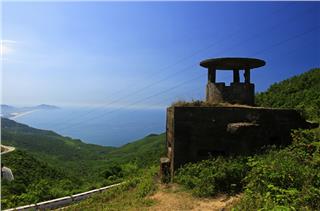
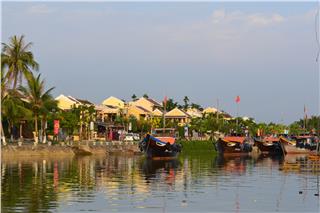
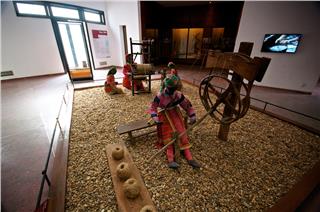
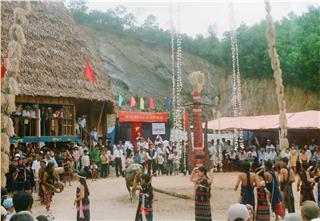

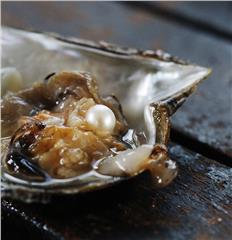

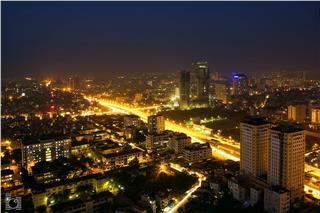
Thay Pagoda locates in the superb mountainous landscape. Thay Pagoda is categorized as cultural-historical monument in Doai region. The name of Doai is said to come from the verse “Doai Phuong tinh nhat khu” which means Doai region, the land in the West of the capital is a quiet land. And Doai region has a long-standing history. The cultural uniqueness of Doai region creates the sacred feature of this land. According to documents, Thay Pagoda was rebuilt in the reign of King Ly Nhan Tong (1072-1027) from a small old temple named Huong Hai.
This pagoda is famous for its beauty art of architecture, charming mountain and mystery, sacred legends of Tu Dao Hanh life, a famous Zen master in the period of Ly dynasty. It is said that the most sacred places were where people passed away, because the souls were still there. Lang Pagoda was related to the beginning of Tu Dao Hanh’s life and Thay Pagoda witnessed the end of his life, the zen master of twelve generation of Vinitaruci. Perhaps, it makes Thay Pagoda attracts many people to come here.
According to the legend, Tu Dao Hanh was a famous herbal doctor. He went to mountains to find herbal for curing people. He taught them how to plant, told them how to play traditional games such as wrestling and cockfighting. Especially, he was said to be the one who invented water puppetry. So that, people in the region admired him, called him Thay (Master). It is said that Tu Dao Hanh was reborn to be Sung Hien Hau’s son and became King Ly Thanh Tong. Thay pagoda is called Ca pagoda as well, written name is Thien Phuc Tu.
According to feng shui, Thay pagoda was built on the dragon shape land, Long Dau hill is on the left of the pagoda, Thay Mountain is on the right. In front of the pagoda, there is the lake named Long Tri or Dragon Pond. Two side of the lake, there are two bridges, Nhat Tien and Nguyet Tien. The bridges created the beard of dragon, which make the lake, look more mystery. In the center of the lake, there is a stage named Thuy Dinh, which said to be the jewel in the dragon mouth. This is the place where they perform water puppetry in festival season.
Thay Pagoda was built in the shape of “Tam” character, on the high base. The pagoda consists of Ha Pagoda, Trung Pagoda and Thuong Pagoda. This pagoda is typical of integration between Buddhism and native religion. Thay Pagoda is the typical one of Vajrayana Buddhism, which use specific image with tantric terms to enlighten people, use art of architecture, art of visual, feng shui, statues and sculptures placement for Buddhist to think about it themselves. In the space of solemn, ancient, down to earth Buddhism architecture, Thay Pagoda can be seen in the arrangement where shrines dedicated to Saint come second after the places of worship dedicated to Buddha. The pagoda also has the art of unique sculpture in the 17th century.
Ha Pagoda displays the statues of Anathapindika and Ananda. Trung Pagoda has the altar of Buddha, two sides of Buddha are Dharmapala and Devaraja statues. The most unique and special feature of this pagoda is Thuong Pagoda, where worshipped the incarnations of Master Tu Dao Hanh, which describe three lives of him: a monk, a King and a Saint. Masters in pagoda told that, with such a huge palace but there were only 36 mortises. The tile roof of the pagoda was done in shape of traditional shoe. The pagoda also worshipped Tu Dao Hanh’s parents, Mr. Tu Vinh and Ms. Tang Thi Loan and two friends of him, Master Minh Khong and Master Giac Hai.
Beside the statues, Thay Pagoda still maintain the valuable relics such as the stone lotus shape throne with dragon and flowers on its lower sides, 4 comers of the throne are Garuda. This is the relic from Ly dynasty. Every year, Thay Pagoda festival, is from the fifth to the seventh of March (lunar calendar), many people come here, praying and visiting. The seventh is the special day, it is said to be the day master Tu Dao Hanh became Saint, and Thay Pagoda festival officially was held to memorize him.
The ritual is the religious performance with instruments. The main gifts are put on the altar with hundreds of other gifts from people. Attending Thay Pagoda festival, people feel like coming to the spiritual realms, enjoying the landscape. The Thay Pagoda festival is the combination of Buddhism, Taoism, Confucianism and folk religion, which make this festival become one of the greatest one in our country. And the Buddhist folk signing art add the beauty to traditional culture of Doai region.
Thay Pagoda festival not only has religious rituals, but also has water puppets show with unicorn and dragon performances, pounding rice, bullfalo fighting. All the performances are brought in so down to earth and attractive. The puppets suddenly appear and disappear on the surface of water. The stage is in the lake in front of Thay pagoda. This is a humidity art which reflect activities of farmers’ life. Come to Thay pagoda festival, we can see the atmosphere full of national identity with religions.
There are cave, lake and market. Mountain and river are typical landscape. Crossing the Nguyet Tien Bridge with 251 stone steps, there is Cao Pagoda, also called Dinh Son. It is said that this is the place where Master Tu Dao Hanh started his religious life. Closely next to Dinh Son pag oda, there is a stone cave. It is said that the cave is the place where Zen Master Tu Dao Hanh was reborn to be King Ly Thanh Tong also called Thanh Hoa Cave.
Thay pagoda landscape makes everyone who come here find peaceful. In one statement, Lord Trinh Can describes the view of Thay Pagoda as a jewel among stones, like spring of all four seasons. Dragon pond and Nhat Nguyet Bridge are added to the beauty of this place. Going along the bumpy path to Than Quang cave, also used Cac Co cave. This cave attached to a tragic and heroic legend. Over two thousand years ago, in this place, the warrior under General Lu Gia’s leadership would rather dead than being conquered by the Han dynasty. Such a tragedy, but Cac Co cave is also a romantic place. Single ladies miss Cac Co cave, single men miss Thay pagoda festival.
The marks are still remained, all contributed to create the sacred and respective space of Thay pagoda. From the charming landscape to the significant legend of Tu Dao Hanh make Sai Son a sacred place. And Thay pagoda with beautiful art of architecture becomes one of the Buddhism centers of Northern Delta.
Source: VTC10 - NETVIET

 Đặt vé máy bay cho người Việt?
Bấm vào đây
Đặt vé máy bay cho người Việt?
Bấm vào đây
Our service uses cookies for technical, analytical and marketing purposes. See our Cookie và Privacy policies for more information. If you agree to this, just keep browsing.


